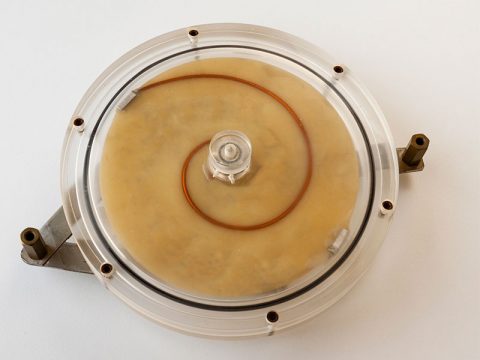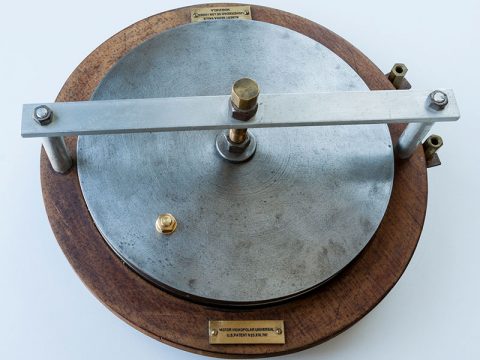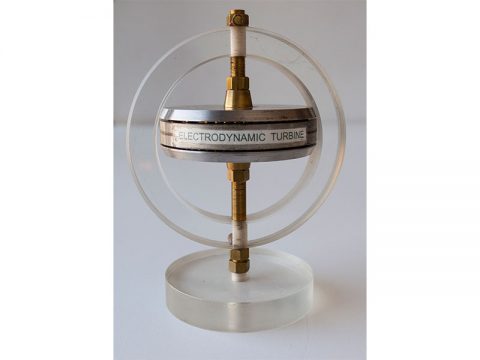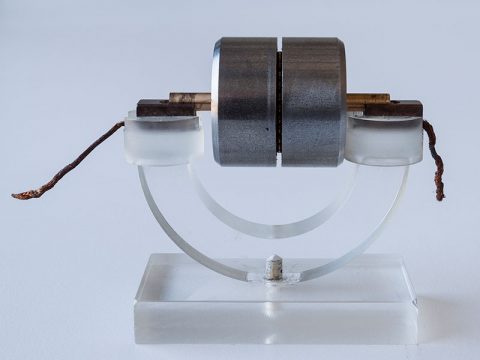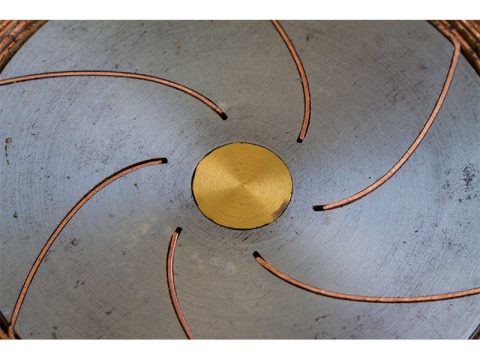
La Turbina Electrodinámica Relativista es un nuevo concepto de motor ideado por el Dr. Albert Serra hace más de 40 años. Surgió de la necesidad de comprender y explicar la paradoja de Faraday.
- No necesita de campo magnético externo para funcionar.
- El par de rotación es proporcional al cuadrado de la intensidad.
- Experimento 0: El disco de Aragó
- Experimento 1: Interacción entre corrientes paralelas
- Experimento 2: Efecto macroscópico de la Electrodinámica Relativista
- Experimento 3: La relatividad de la Paradoja de Faraday
- Experimento 4: El primer motor relativista
Algunos artículos publicados relacionados con nuestra investigación y desarrollo en electrodinámica relativista.
- El inició del electromagnetismo empezó con el disco de Aragó, un experimento sumamente conocido en todos los laboratorios de física del siglo XIX y que dio paso al disco de Faraday.
Abstract: El conocido astrofísico Carl Sagan comentaba: “Vivimos en una sociedad profundamente dependiente de la ciencia y la tecnología en la que nadie sabe nada de estos temas. Ello constituye una fórmula segura para el desastre”. Sobretodo cuando este conocimiento científico y tecnológico proviene del electromagnetismo. Es conocido que los orígenes del electromagnetismo se remontan a los experimentos de Oersted, pero casi nadie conoce la gran contribución que efectuo Francesc Aragó al desarrollo del electromagnetismo. En este articulo demostramos que los experimentos de Aragó contribuyeron de forma decisiva al pensamiento teórico de André Marie Ampere. Culminando en el experimento decisivo del disco de Aragó, donde se muestra el magnetismo de rotación, precursor del disco de Faraday y origen de la tecnología electromagnética.
2. Introducción relativista al comportamiento de un solenoide.
Abstract: It is a mistake to believe that the primitive experiments, known as the origin of the physical sciences, have been sufficiently studied and therefore it is impossible to extract from them some new and important knowledge. This view has contributed to the perpetuation of some misconceptions. The study of such experiments from other points of view, and applying new techniques, makes it possible to expand their meaning and understanding. Einstein must have thought this way since in 1905 decided to study the Faraday disk and, by doing so, discovered the theory of relativity, according to which the magnetic field is a consequence of the relative motion of different signs electric charges. The verifications of the theory of general relativity by cosmological experiments have led to the belief that the special relativity theory is irrelevant in terrestrial dimensions and speed. Therefore, it is important to correct this error by simple laboratory experiments, whose explanation is only possible by using special relativity theory.
3. Nuestra introducción al comportamiento de nuestro motor electrodinámico.
Abstract: Easy experiments carried out in the dawn of electromagnetism are still being a reason for scientific articles, because its functioning contradicts some laws and rules of electromagnetic theory. Although these experiments led Einstein to discover the relativistic electrodynamics and explained its working, the scientific community had not understood this. They see in these experiments a proof against relativity and prefer to look for the solution in the electromagnetics’ theory or accept that their are an exception. By means of a long and detailed experimental study with a new design in electromagnetic engines and improvements of these experiments that we call relativistic electrodynamics turbine, we managed to explain its working using relativistic electrodynamics. The revision of these experiments had taken us to discover the real law of induction, which does not have any exceptions. The explanation of the relativistic electrodynamics turbine led us to discard the Faraday induction law and argue that the true law of induction is a consequence of the conservation of the angular momentum of the charges as the conservation of the angular momentum of the mass. Thus Einstein’s idea to unify electromagnetism and mechanics is now clear and also opens the way for new research in science
4. La relación entre el espacio y el tiempo esta íntimamente ligada a la velocidad de la luz. Aquí dejamos un breve artículo donde consideramos que la velocidad no es constante.
Abstract: Are theories related to the time dependence of the speed of light that predict that the speed of light is not constant but depends on the time. But they are not verifiable or demonstrable physically or mathematically with concrete results. In this study, based on simple assumptions on the microwave background and thermal electrons, a model of the time varying speed of light is presented, which is fully compatible with currently accepted results for the speed of light and the Hubble constant theories.
5. La ley de relación del transformador en un circuito magnético se obtiene a partir de la ley de inducción electromagnética. Pero dentro de nuestra teoría relativista de la corriente eléctrica la ley de inducción electromagnética es una manifestación de la inercia de los electrones. Así pues, en este articulo demostramos la ley del transformador a partir de la conservación del momento angular de la masa de la carga eléctrica.
Abstract:La ley de relación del transformador es una ley propiamente electromagnética, que surge como consecuencia de la aplicación de la inducción electromagnética entre el circuito eléctrico primario y el circuito eléctrico secundario. En este articulo proponemos una nueva demostración de la relación del transformador sin necesidad de recurrir a la inducción electromagnética e incluso sin recurrir a principios electromagnéticos. Deducimos la ley a partir de principios mecánicos fundamentales, como es la ley de conservación del momento angular. Con todo esto demostramos que la ley del transformador es consecuencia de un fenómeno inercial.
